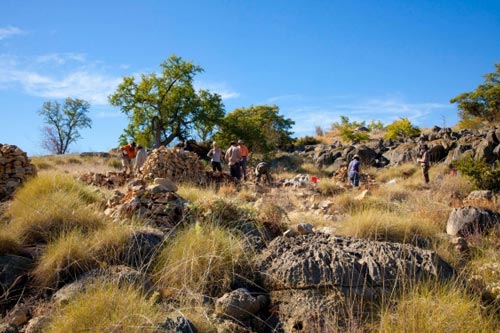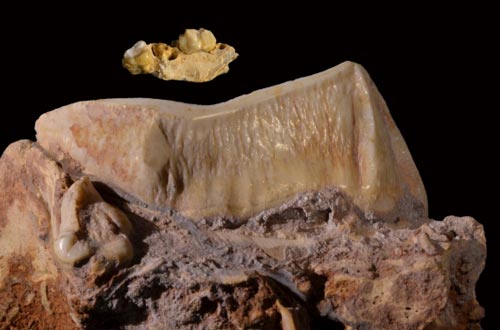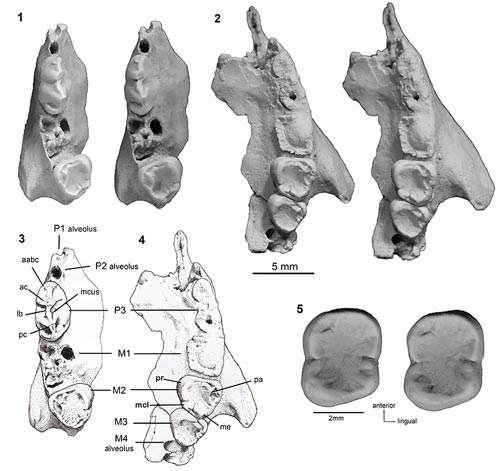Attenborough’s New Kitty
Microleo attenboroughi – Pocket Marsupial Lion Honours Naturalist
Naturalist Sir David Attenborough has had yet another prehistoric critter named in his honour. This time, it’s a kitten-sized marsupial lion, a member of the fearsome Thylacoleonidae family. Sir David has been a long time supporter of the Riversleigh World Heritage site of north-western Queensland (Australia), and it is from these freshwater limestone deposits that fossils representing a new type of marsupial lion were excavated.
Microleo attenboroughi – A Fearsome “Kitty”
Picture credit: Peter Schouten
Microleo attenboroughi
Microleo attenboroughi (Attenborough’s tiny lion) was very probably arboreal and it shared the lush, tropical forests of the Miocene of Australia with a number of other types of marsupial lion. None of them were anywhere near as big as Thylacoleo carnifex of the Pleistocene and despite the extremely fossiliferous nature of the site, only one specimen, represented by some skull fragments and parts of the jaw, of Microleo has been found to date. Microleo is the smallest member of the Thylacoleonidae known to science.
Commenting on the discovery, Dr Anna Gillespie of the University of New South Wales stated:
“Microleo attenboroughi would have been more like the cute but still feisty kitten of the family. It was not lion-size or even bob-cat-size. Weighing only about 600 grams, it was more like a ringtail possum in size.”
A spokesperson from Everything Dinosaur commented that the newly described marsupial lion would have weighed less than an average pet guinea pig.
University of New South Wales Field Team Members Looking for Fossils

The fossil rich part of the Riversleigh deposits where the Marsupial Lion fossil discovery was made.
Picture credit: University of New South Wales
Visiting Neville’s Garden
The fossil was found in a location at Riversleigh known as Neville’s Garden, which has become renowned for its rich diversity of animals. The new species has been described in the academic journal “Palaeontologia Electronica”. Although only fragmentary fossils were found, the maxilla contain an enlarged, shearing premolar tooth in front of the other molars, a specialised feature characteristic of the marsupial lion family. The fossils are believed to be between 18-19 million years old.
The Teeth of M. attenboroughi Compared to Thylacoleo carnifex

The relatively tiny tooth row of Microleo attenboroughi (top), compared with the tooth row of its Pleistocene relative, the lion-sized Thylacoleo carnifex.
Picture credit: University of New South Wales
The Famous Riversleigh Site
The diversity of marsupial lion fossils from Riversleigh is unparalleled anywhere else in Australia. Despite its small size M. attenboroughi was one of the larger mammalian carnivores known from the limestone deposits. The ancient rainforest environment was certainly extremely rich, although very little evidence regarding the flora has been preserved, the Riversleigh deposits have revealed fossils of tiny koalas, toothed platypuses, possums, kangaroos, reptiles, bats and all sorts of different birds including Australia’s earliest known parrot.
For models and replicas of prehistoric animals: CollectA Deluxe Prehistoric Animal Figures.
Commenting on the diversity of species present, Dr Gillespie said:
“Microleo shared these northern Miocene rainforests with two larger species of marsupial lion, one cat-sized and the other dog-sized. Although it is possible they competed with one other, the size differences probably means they each specialised on a different size range of prey. It’s likely that Microleo scampered amongst the tree-tops, gobbling insects as well as small vertebrates such as lizards and birds while simultaneously trying to avoid becoming a prey item for its larger relatives.”
The Holotype Fossils of Microleo attenboroughi

The right maxilla and the left maxilla of Microleo attenboroughi with line drawing illustrations (occlusal views).
Picture credit: University of New South Wales
Analysing the Fossil Teeth and Jaws
The picture above shows (1) a dorsal view of the right maxilla and a dorsal view of the left maxilla (2). When examining dentition the dorsal view is often referred to as the occlusal view (the view from the top looking down at the biting surface of the teeth). The two line drawings (3) and (4) are illustrations of the right and left maxillas respectively. Picture (5) is a view of molar 3.
Key: aabc, accessory anterobuccal cusp; ac, anterior cusp; lb, longitudinal blade; mcl, metaconule; mcus, medial cusp; me, metacone; pa, paracone; pc, posterior cusp; pr, protocone.
The researchers hope that more fossil material of Microleo can be found. This would help them work out more about the anatomy of this tiny predator, such as whether or not Microleo possessed an enlarged “killing thumb claw”, like its relative Thylacoleo.
To read a recently published article examining how Thylacoleo carnifex may have hunted: How the Marsupial Lion Got To Grips With Its Prey.


